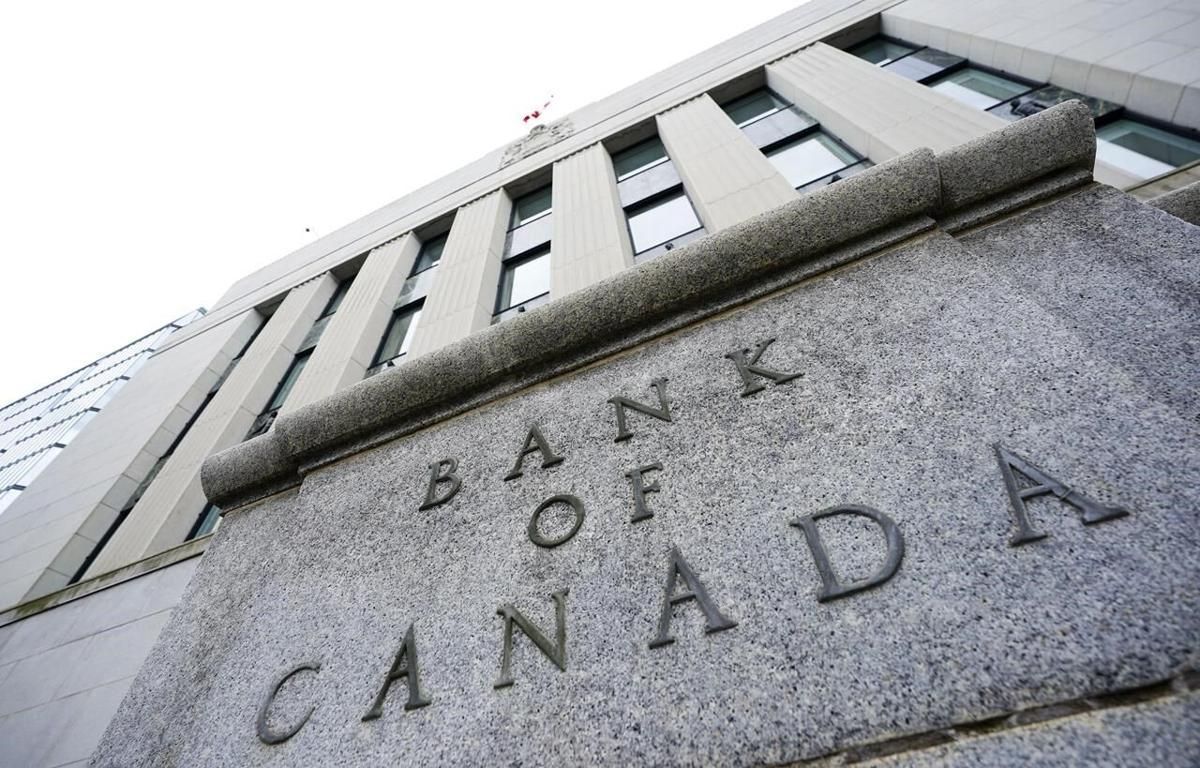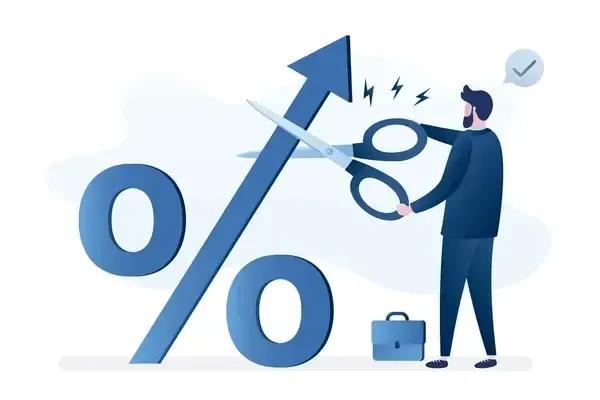Do You Need Time For Your Retirement Investments To Recover?
Nest Mortgage • August 11, 2020
COVID-19 is wreaking havoc on retirement investments, particularly for those who rely on dividends as part of their income. Over the past decade, many older Canadians have taken a riskier approach with retirement investments because of low bond yields and interest rates caused by the financial crisis in 2008.
Instead of playing it safe, many retirees have turned to the stock market for better returns and dividend income. With global markets in a highly volatile state due to the pandemic, right now it is challenging to move investments to safer ground, and many companies have put dividend payments on hold.
If you need immediate cash to ride out the remainder of the pandemic, you may think you need to liquidate some investments. But what if there were other options that can provide the much-needed cash without taking investment losses? Consider borrowing from your home equity instead of liquidating investments prematurely. Here’s why this makes sense.
Take advantage of low interest rates
Uncertainty in the economy has caused the government to lower interest rates. Mortgage rates are at historic lows, and borrowing money at this point in time doesn’t cost a lot. By gaining access to your home equity through mortgage financing, you can somewhat bridge the gap. You can increase your cash flow until the markets, economy, and your investment portfolio recover.
Historically, stock markets have always recovered.
Bloomberg’s Canadian retirement expert Dale Jackson explains, “The S&P 500 lost half its value between October 2007 when the meltdown began and its March 2009 bottom. By October 2013, the S&P 500 topped its pre-meltdown high and has since doubled from there (pre-pandemic). It wasn’t until June 2014 that the TSX topped its pre-meltdown high. It has since rallied an additional 20 per cent (pre-pandemic).”
If the markets recovered both the Great Depression and Great Recession, there’s little reason to fear it won’t happen post-pandemic. The timing of the recovery, however, is uncertain.
Strategically tapping into home equity
You may be reluctant to use home equity to provide for living expenses until the post-pandemic economy recovers. And that is understandable. You worked hard to pay off your mortgage, why would you want a new one?
Well, if you’re faced with the choice of selling investments at a loss, or borrowing against your home equity to give yourself time to bridge the current cash flow gap and allow your investments to recover, it really becomes a matter of calculating the dollars and cents.
This is where expert financial planning comes in. You should be considering ALL your options, not just the ones we’ve been conditioned to consider over the years.
Unfortunately, there is no guidebook for navigating a global pandemic. However, there are options you can consider, now is a good time to consider them.
Reverse Mortgage
If you’re 55+ and occupying your home as your primary residence, you should seriously consider a reverse mortgage. It’s the ultimate mortgage deferral option.
You’ve likely seen commercial ads for reverse mortgages. And while some people think this is a risky way to access funds, if you intend to live in your home throughout your retirement years, it can be an inexpensive source of funds. Especially given our current low-rate environment.
One common misconception is that the bank owns your home if you get a reverse mortgage. This just simply isn’t true. A reverse mortgage is like any other mortgage, however, instead of making regular payments, the mortgage amount increases each year and is due when you choose to sell your house.
Other mortgage options
If you’ve got a steady pension income, you may be able to qualify for conventional mortgage financing. However, if you’re still paying off your first mortgage, you can apply for a second mortgage based on the remaining equity in your home.
It should be noted that a second mortgage is a high-risk option with significantly higher interest rates. If you’re cash-strapped already and are having trouble making payments on your first mortgage, there’s no benefit gained by adding a second payment.
Another option to consider is a Home Equity Line of Credit (HELOC), which operates much like a bank overdraft. It’s a pool of funds attached to your home that can be used when cash flow is low and paid back when cash flow improves. Interest rates are typically low because the line of credit is secured by your home equity. Further, interest is calculated based on actual borrowing not on the amount approved.
Avoid Fear-Based Decisions
Making fear-based investment decisions rarely work out. Because these are uncertain times, it’s important to consult with financial experts to discuss your options and allay your concerns.
Remember you’re not alone. Millions of Canadians are in similar circumstances. There are options. As part of a solid financial plan, using your home equity can provide funds that act as a bridge to avoid investment losses until the economy and market recover.
If you’d like to discuss your financial situation, contact us anytime
for a free consultation. We would love to work through all your options with you!

Who Knew? 🔮 As expected, or easily predicted, the Bank of Canada formally announced a 0.50% cut to the overnight rate earlier this morning. (click for official announcement) This adjusts Prime Rate down to 5.95%, the lowest level we’ve seen in the past two years, and demonstrates a clear signal that the BoC is doing everything possible to kick-start economic growth. A Green Light to Borrow Governor Tiff Macklem’s message is straightforward: borrowing just got cheaper, and more cuts could be coming. With inflation settling back around the 2% target, he’s effectively giving Canadians the go-ahead to take advantage of lower rates, even if average core inflation is still a touch above the goal. "We want to see growth strengthen," Macklem said, and he’s determined to make it happen.

As anticipated, this week's Bank of Canada announcement kept the overnight rate unchanged. The Bank expects inflation to hover around 3% and drop below 2.50% later this year, aiming to reach the target of 2% by 2025. Wednesday marked the sixth consecutive "no change" announcement, although speculation persists that we should see rates, specifically Prime, drop by .75-1.00% by the end of 2024. Despite no movement being widely anticipated, it is disappointing that further insight into a housing market reset has now been postponed until the next scheduled decision on June 5th. With unemployment at a 26-month high and GDP underperforming, these are two indicators contradicting the notion of rates remaining "higher for longer".

In light of theIn the wake of today's Bank of Canada (BoC) announcement maintaining the overnight rate at 5.00%, Nest brings you a comprehensive overview of the current mortgage landscape. Prime Rates and payments for variable lending products remain unchanged following this non-rate event, leaving borrowers in a familiar position. While the BoC provided limited insight into the potential timing of interest rate cuts, consensus suggests we might witness the first rate cut materializing in June of this year. Despite the ongoing commitment to restoring price stability for Canadians, a message consistent since July 2023, it is essential to highlight key facets of today's mortgage landscape: 1. GDP: Canada's 4th Quarter (2023) GDP surprised with a 1% annualized growth rate, surpassing expectations. However, beneath the positive headline lies a complex narrative. The growth coincided with a population surge of approximately 430,635 people, equating to a 4% annualized growth rate. On a per capita basis, Canadians appear to be experiencing the intended tightening, a trend persisting in 5 of the last 6 quarters. Per capita GDP adjusted for inflation is now lower than Q4 2014, a noteworthy observation challenging the notion of an economy in need of restraint. 2. Labour: In January, Canada's Labor Force added 37,000 jobs, outperforming expectations, leading to a decline in the unemployment rate to 5.7%. However, a closer examination reveals some finer details. Despite adult population growth of 125,500 people, the labor force expanded by a much smaller 18,200. Additionally, the participation rate for the age group of 15-24 witnessed a concerning decline of 130,000 persons. Without this decline, the unemployment rate would be 0.5% higher. 3. Inflation: Canada's Headline Inflation Number registered below expectations at 2.9%. In the ongoing battle against inflation, there has been significant progress since CPI peaked at 8.1% in June 2022, now comfortably below the 3% threshold. Core measures, though still elevated at 3.4% and 3.3% respectively, are expected to ease further as higher rates prompt more mortgage holders to renew into lower interest rate mortgages. 4. Global Considerations: Economic performance and Bond yields have been influenced by global factors. While global economic growth slowed in the fourth quarter of 2023, U.S. GDP growth remained surprisingly robust and broad-based. Inflation in the U.S. and the Euro area continued to ease, accompanied by a notable rise in equity markets. What's Next? The looming question pertains to the BoC's eventual decision to ease interest rates. The per capita statistics and the intricate state of the Canadian economy are interwoven in unpredictable ways, with the wildcard being the surge in population growth. Inflation, triggered by demand exceeding supply, faces uncertainties on how pent-up demand will respond to rate cuts. The surge in Canada's population, almost double the pre-COVID growth, plays a crucial role in shaping the trajectory of the BoC's decisions. Since October 2023, significant drops in fixed mortgage rates have been observed, likely to persist gradually as markets anticipate rate cuts by the BoC. Current odds indicate at least one rate cut by this summer, and two more to follow before year-end ( market survey ). As we approach the Spring Market, optimism and demand gain momentum. If you've adopted a 'wait and see' approach, now is the opportune moment for a conversation. Preparing before the first rate cut is pivotal, as optimism will inevitably transition to confidence, and housing market activity will return to normal levels. Next BoC Announcement: April 10, 2024.

In light of the softening of the Canadian economy, the Bank of Canada opted to maintain its overnight rate for the fifth consecutive time earlier this month leaving Prime and variable product pricing unchanged. While "financial conditions have eased," the Bank also highlighted persistent inflationary pressures stemming from ongoing wage growth and robust immigration. This is exacerbated by the housing supply failing to keep pace. The Bank continues to emphasize the need for restrictive policy to bring inflation back within target, yet “the market” is no longer buying it! With subdued core inflation pressures, declining GDP and house prices, and a softening labour market, it is inevitable that the Bank will need to reduce rates to avoid severe economic consequences. Market consensus is the rate-tightening cycle has passed and both new and existing mortgage holders can look to much needed rate reprieve in 2024. Bond yields have dipped more than -100bpts since October, leading to lower fixed rates. Conventional 5-year fixed rates are offered at 5.69-5.99%, with a noteworthy offer of 4.99% for default-insured purchases. As fixed rates have only dropped -50bpts over the same period, expect further discounting in the weeks ahead. THE (MORGAGE) YEAR THAT WAS, AND WHAT LIES AHEAD?

Governor Tiff Macklem and the Bank of Canada (BoC) made the expected decision this week: no change to the Overnight Rate [no change to Prime] . While the Bank has surprised markets in the past, this week’s hold was widely anticipated. What makes this instance unique is the growing body of evidence showing that higher interest rates are leaving their mark on the economy... Unprecedented Data Points: Second quarter GDP figures fell significantly below expectations, contracting by 0.2% compared to anticipated growth of 1.2% to 1.5%. Despite substantial population growth, the economy should be thriving, but it's not. Time Lag of Rate Impact: Generally, interest rates take over 12 months to exert their full influence. In the last year, we've seen a total increase of 1.25% in Q2 2022 and another 1.75% in rate hikes in Q3 2022. The July 2023 GDP numbers are showing the impact of these hikes, with sluggish growth. Consumption and Employment Challenges: Total retail sales have plateaued, especially when adjusted per capita, reflecting the weight of higher interest rates on consumer spending. The unemployment rate has climbed by 0.5% in the last three months, further complicating the economic picture. What does this mean for mortgages and rates? Inflation is likely to persist at elevated levels for some time, but it won't prompt the BoC to act unless accompanied by a rebound in GDP growth and spending. As disappointing economic data advances expectations of rate cuts, we may experience downward pressure on fixed interest rates sooner than previously forcasted. Experts are nearing a consensus that the BoC has reached its ceiling on rate tightening, with inflation as the last obstacle before easing. In these uncertain times, we are here to assist. Whether you're considering home buying or refinancing for improved cash flow, we can provide the answers tailored to your needs. Please don't hesitate to reach out to discuss your mortgage needs!





